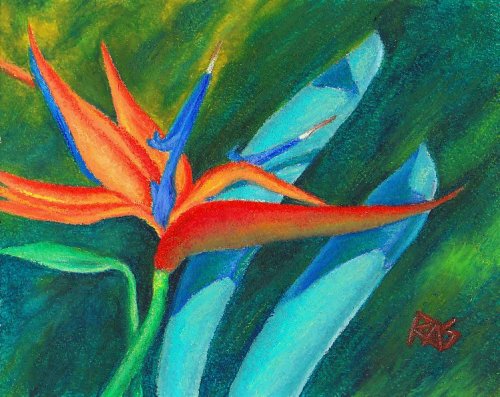|
About Oil Pastels
Oil pastels are pigments mixed with a binder to create a soft, easily blended slightly greasy stick. The binder is made up of mineral oils and waxes. Oil Pastels include mineral oil and so never really dry, while oil sticks use siccative {drying) oils and will harden to a dry paint crust. This difference in the binder formulas is the most important distinction between oil sticks and oil pastels. Each manufacturer’s formula is proprietary and unique for both of those products. This makes every brand handle differently. All of them dissolve for wet effects, either with oil painting mediums or with water.
Many fine art paintings produced with OP are loose, jazzy abstracts and nonrepresentational art. While it isn't easy to create realism with blunt sticks the size of small or large crayons, it can be done with some specialized tools. These have become more common in recent years and I'm thrilled at some of the results I've seen in other artists' works. Powerful Impressionist effects are as easy to get as with soft "dry" pastels -- the dusty kind. Most techniques that work well for pastels will work with OP as you can put light over dark as well as dark over light. Unlike pastels, you can scrape through outer layers to reveal the first layers staining the paper. New tools like Colour Shapers allow pressure blending, painterly effects and precise detail. The future of oil pastels is as broad as your imagination. Every artist who discovers them creates something unique that adds to the body of knowledge we have about this great fine art medium. They're not just for kids.
More Information...Oil Pastels History A brief history from their invention in the 1920s to some of the newest products available.
Oil Pastel Society
I joined the Oil Pastel Society shortly before starting this site. The site has great articles and the newsletter has even more since I've become a regular contributor. Membership dues are quite reasonable for a fine art society and the OPS hosts an annual juried competition.
|





